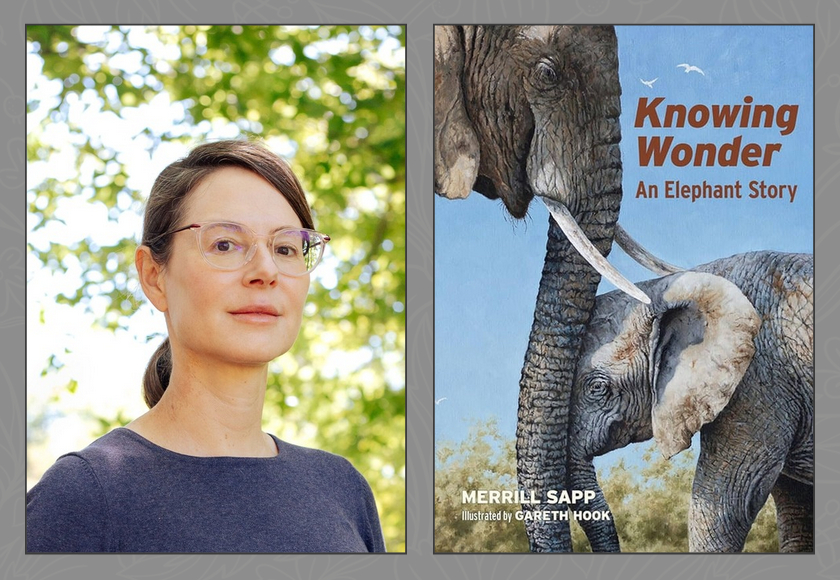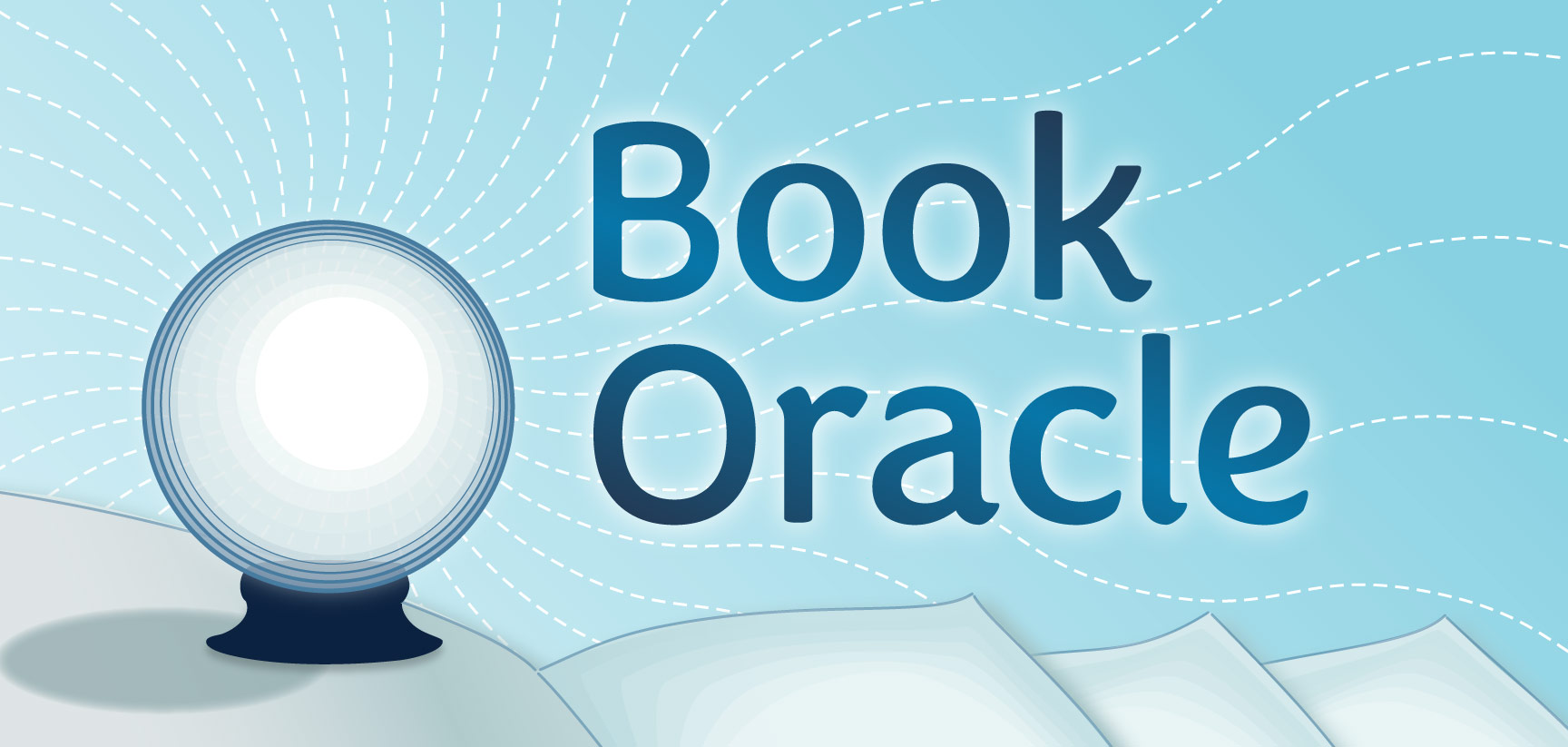 Merrill Sapp is a Columbia, MO author whose debut book is “Knowing Wonder: An Elephant Story.” The book is a blend of fiction and nonfiction exploring the lives of elephants within the context of real behaviors, scientific insights, and environmental challenges. Sapp, a cognitive psychologist and Stephens College professor, is dedicated to understanding and protecting elephants. She was kind enough to take the time to be interviewed via email.
Merrill Sapp is a Columbia, MO author whose debut book is “Knowing Wonder: An Elephant Story.” The book is a blend of fiction and nonfiction exploring the lives of elephants within the context of real behaviors, scientific insights, and environmental challenges. Sapp, a cognitive psychologist and Stephens College professor, is dedicated to understanding and protecting elephants. She was kind enough to take the time to be interviewed via email.
Daniel Boone Regional Library: This book started as a non-fiction manuscript until your publisher suggested rewriting it as a fictional narrative. What was that rewriting process like? Was there anything cut during the rewrite that was hard to leave behind?
Merrill Sapp: It took me a few weeks to come around to the idea because, indeed, I thought a narrative version would lose too much. The original manuscript included sections about Asian elephants and more about the history of conservation and the wildlife trade. But once I gave in and started writing, the narrative won me over — I quickly figured out the power of story.
The other advantage is that people might actually read this version; it is hard to get any message out with a book that people don’t read. The narrative version isn’t packed with as much information, but I learned the value of writing for both the head and the heart. People seem to enjoy the elephant characters, I want readers to feel they’ve gotten to know them as individuals.
DBRL: What led to your interest in elephants? Is there a particular experience with an elephant that has had an impact on you and your writing?
Sapp: My first elephant experience was a ride at a zoo at the age of ten. It was a summer I spent with my grandparents. They had one of those big televisions that was enclosed in a heavy wooden frame and my grandfather watched a lot of C-SPAN on it. I was so bored that I read a ton of books and won a reading competition at the local library. The elephant ride was my prize. I chose it out of a red wagon full of toys and gift certificates. For the ride, I climbed onto the elephant’s large saddle from a platform and then she walked in circles for a few minutes. I remember the ride with chagrin because the similarity between human and elephant emotions includes a dislike for being in close contact with someone we don’t know. Also, she likely did this for hours a day.
My natural love for animals inspired this choice for a prize but the ride gave me no significant appreciation for elephants or their lives. Years later, when I started learning about elephants, I thought back to this experience and how it makes a complex, intelligent being seem like a simple beast. Now I know there really is no such thing. The experience is more poignant to me now than it was then — it took reading for me to appreciate the life of this elephant. I started with books like “Love, Life, and Elephants” by Dame Daphne Sheldrick and “Elephant Company” by Vicki Croke. After I had read all the popular books I could find, I transitioned to academic material and eventually had to travel the world to talk to experts and experience elephants in the wild for myself.
DBRL: How did you come up with the names and personalities for the elephants in the story? Did you grow attached to them as the writing progressed?
Sapp: Most of the names were chosen from places near the Luangwa Valley in Southern Africa. For example, the waterfall known as Victoria Falls was originally named Mosi-Oa-Tunya by the people who live there. That’s how Mosi and Tunya were named.
The exceptions to the place names are Sumina and Yama, which mean “agreeable” and “uncle”, in the Bemba language, reflecting their relationships in the story. The personalities of the elephant characters are realistic portrayals of them as individuals and their associated family dynamics. Researchers found that wild African elephants vary along four basic personality traits: leadership, playfulness, gentleness, and constancy. Lua is a strong matriarch based on these traits — not overbearing or high-strung, but smart and patient.
And I definitely got attached to them. Without revealing any specific spoilers, there are some sad parts in the book that I procrastinated writing — I knew some bad things were going to happen but I had to steel myself to actually write them.
DBRL: An elephant can sense vibrations in various incredible ways. If an elephant was standing outside of Columbia City Hall at the intersection of Broadway and 8th Street, could you give us any examples of how far they might be able to sense vibrations or communicate with other elephants?
Sapp: From City Hall, Lua could hear the vocalizations of another elephant standing at Stephens Lake Park. But sometimes they could communicate from much farther than that. The African savanna has some special qualities, especially when the weather is right. Under these conditions, Lua could detect another elephant from Rock Bridge State Park. And that is just one point on the whole circumference of an area from which she is getting information. Also, research has shown that elephants can respond to rain up to about 150 miles away. We don’t know how they do it and I love that mystery.
DBRL: One chapter is different from the others as it follows an elephant removed from her herd and taken into human captivity. Can you tell us your thinking behind including this chapter?
Sapp: There is a stark contrast between the lives of wild elephants and the impoverished lives of elephants in captivity. When you see elephants as individuals, you can’t ignore what we do to them for our own edification but not for their benefit. I want people to understand that elephants still exist in the wild and we shouldn’t give up on them. We need to protect their habitats so they can continue to live their amazing lives. Captivity isn’t a viable or desirable alternative.
DBRL: Read anything good lately you’d like to recommend?
Sapp: The last book I read was “Bringing Nature Home,” by Doug Tallamy. In the face of environmental destruction, it is easy to feel hopeless and apathetic. Tallamy makes a case for hope — simple things that we each can do to rebuild native habitats that sustain wildlife. Mervin Wallace of the Missouri Wildflowers Nursery gave me this book when he was helping me with some ideas for a story. Tallamy has several important books that are enlightening and enjoyable to read. The most recent is “How Can I Help? Saving Nature with your Yard.”
I read all the time and use my Instagram account to promote books, mostly about wildlife. People can connect with me there @merrillvsapp. I am open to suggestions if anyone is readying anything I should know about!
DBRL: Where can readers get a copy of your book?
Sapp: They can get it directly from the publisher at Chin Music Press, or at Skylark Bookshop in downtown Columbia, or major online retailers.


